Disclosure: This article contains affiliate links. We may earn a commission from purchases at no extra cost to you, which helps our travel content.
As someone who's witnessed festivals across continents, I can confidently say that Colombia's Carnival of Barranquilla deserves its UNESCO Cultural Heritage status. Four days of vibrant costumes, pulsating music, and streets transformed into an endless dance floor – it's a sensory overload in the best possible way. My dual heritage has always drawn me to celebrations that preserve cultural traditions, and this pre-Lenten festival delivers authenticity in spades. But beyond the dazzling parades and infectious rhythms lies a celebration with complex logistics, especially for solo travelers. After navigating the carnival twice – once disastrously unprepared and once with proper planning – I'm sharing my complete guide to experiencing this cultural phenomenon safely, affordably, and memorably. Whether you're drawn to the traditional dance competitions, the elaborate costumes, or simply the electric atmosphere of Colombia's biggest party, this insider's guide will help you navigate the beautiful chaos of Barranquilla's crown jewel.
Understanding Barranquilla's Carnival: Origins and Significance
Barranquilla's Carnival isn't just Colombia's biggest party—it's a complex tapestry of cultural resistance, historical preservation, and pure joy that has evolved over centuries. Dating back to the 19th century, this celebration represents the fascinating blend of indigenous Colombian, Spanish colonial, and African traditions that define Caribbean Colombia's cultural identity.
During my first visit, I made the rookie mistake of seeing only the surface-level spectacle. It wasn't until I connected with María, a local artisan who creates traditional masks for the parade, that I began to understand the deeper significance. 'Each character you see has survived generations,' she explained while applying delicate paint strokes to a marimonda mask, the iconic long-nosed character representing mockery of the elite. 'When we dance, we're not just celebrating—we're remembering.'
The four main days follow a specific structure, each with distinct traditions:
- Saturday: La Batalla de Flores (Battle of Flowers), the grand opening parade
- Sunday: La Gran Parada (The Great Parade), featuring traditional dance groups
- Monday: Festival de Orquestas (Orchestra Festival), a competition of musical groups
- Tuesday: Burial of Joselito Carnaval, a theatrical funeral marking the end of festivities
What struck me most was how the carnival serves as a living museum of Colombia's Caribbean cultural expressions. The traditional cumbia and mapalé dances, the Congo groups with their vibrant costumes, and the satirical characters all tell stories of resistance, celebration, and cultural survival. Understanding these elements transformed my experience from mere spectator to appreciative participant.
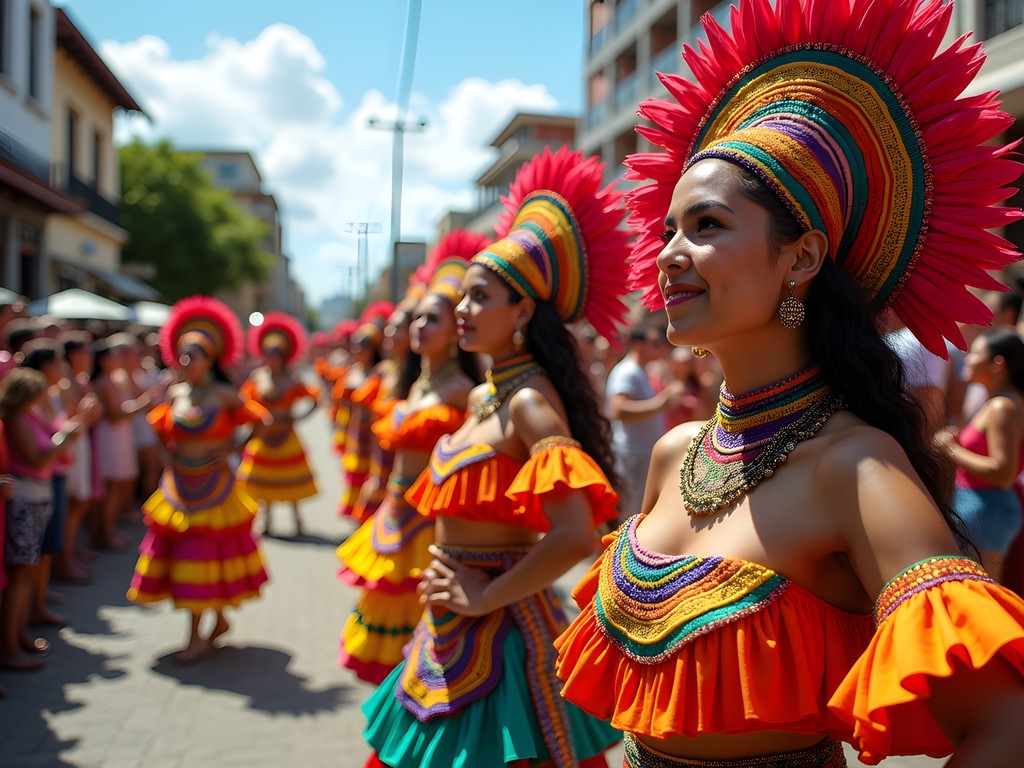
💡 Pro Tips
- Read up on the main carnival characters (Marimonda, El Garabato, Congo) before attending to better appreciate their significance
- Visit the Carnival Museum in Barranquilla before the festivities begin to understand the historical context
- Look for pre-carnival events that are less crowded but equally authentic, often starting weeks before the main celebration
Planning Your Trip: Timing, Accommodation, and Budgeting
Timing is everything when it comes to Barranquilla's Carnival. The festival occurs annually in February or early March, ending on the Tuesday before Ash Wednesday (following the Catholic calendar). I learned the hard way that accommodations in Barranquilla can triple in price and reach full capacity months in advance.
My police officer's planning instincts served me well on my second visit. I booked a modest but clean hostel in the El Prado neighborhood four months ahead, paying about 40,000 Colombian pesos (approximately €10) per night. Compare that to my desperate last-minute booking during my first carnival, which cost nearly 180,000 pesos for a subpar room!
For budget travelers, I recommend:
- Accommodation: Hostels in El Prado or Alto Prado neighborhoods offer the best value while remaining safe and accessible. I stayed at Blue Almond Hostel, which organized group walks to main events.
- Transportation: Forget rental cars during carnival—streets close unpredictably. Instead, I purchased a prepaid local SIM card immediately upon arrival, which proved invaluable for ordering safe transport through apps like Cabify or Didi.
- Event Tickets: The strategic approach is to splurge on one premium event (I chose La Batalla de Flores with reserved seating) and attend free street celebrations for the remainder. My premium seat cost 150,000 pesos (€35) but provided shade, security, and unobstructed views.
My weekly budget breakdown: - Accommodation: €70 (hostel, 7 nights) - Food: €80 (mixing street food and mid-range restaurants) - Transportation: €40 (including airport transfers) - Event tickets: €35 (one premium event) - Miscellaneous (including costumes): €50
Total: Approximately €275 for the week, excluding flights
One expense I never regret is purchasing a anti-theft crossbody bag. In crowded situations like Carnival, it kept my essentials secure while allowing me to dance freely without constantly monitoring my belongings.
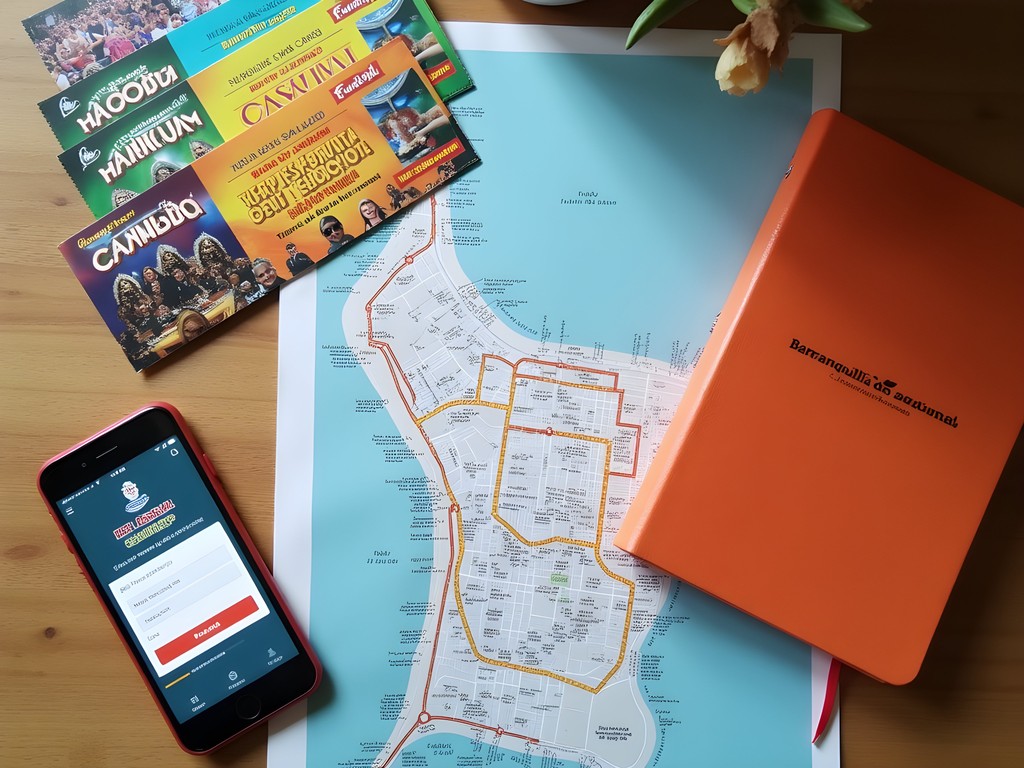
💡 Pro Tips
- Book accommodation at least 3-4 months in advance to secure reasonable rates
- Consider staying slightly outside the main carnival area for better prices and quieter nights
- Purchase tickets to main events online before arrival to avoid inflated street prices
Solo Female Safety: Navigating South America's Biggest Party
Let me be clear—Barranquilla during Carnival is generally welcoming and safe, but it presents unique challenges for solo female travelers. My police background has trained me to assess situations quickly, a skill that proved invaluable amidst the beautiful chaos of Colombia's biggest celebration.
My first carnival experience taught me that the typical safety advice needs specific adaptations. The traditional carnival element of maicena (throwing flour) and foam spraying means everyone becomes a potential target for good-natured mischief. While usually harmless, these traditions can occasionally be used inappropriately.
Practical Safety Measures I Implemented:
During daytime events, I joined free walking tours to connect with other travelers. The local guides not only provided cultural context but created an instant social circle. For evening festivities, I established a buddy system with two women from my hostel—we agreed to leave together regardless of individual preferences to continue partying.
One of my most effective strategies was dressing strategically. I wore colorful clothing to blend with the festive atmosphere but avoided expensive jewelry or accessories. I kept a money belt hidden beneath my clothes for my passport and extra cash, carrying only the day's spending money in my crossbody bag.
My police training taught me to trust my instincts. When a group of men persistently invited me to an 'exclusive after-party' despite my polite declines, I immediately relocated to a family-heavy section of the crowd. Colombian families attending carnival are often welcoming and protective of solo travelers.
Perhaps most importantly, I maintained situational awareness without sacrificing enjoyment. This meant limiting alcohol consumption, staying hydrated with bottled water, and mentally noting exit routes at crowded venues—habits from my professional life that seamlessly transferred to travel.
The carnival atmosphere can create a false sense of intimacy. While most interactions were genuine and friendly, I maintained healthy boundaries, particularly when locals invited me to private celebrations. When I did accept such invitations, I shared my location with trusted contacts using my phone's tracking features.
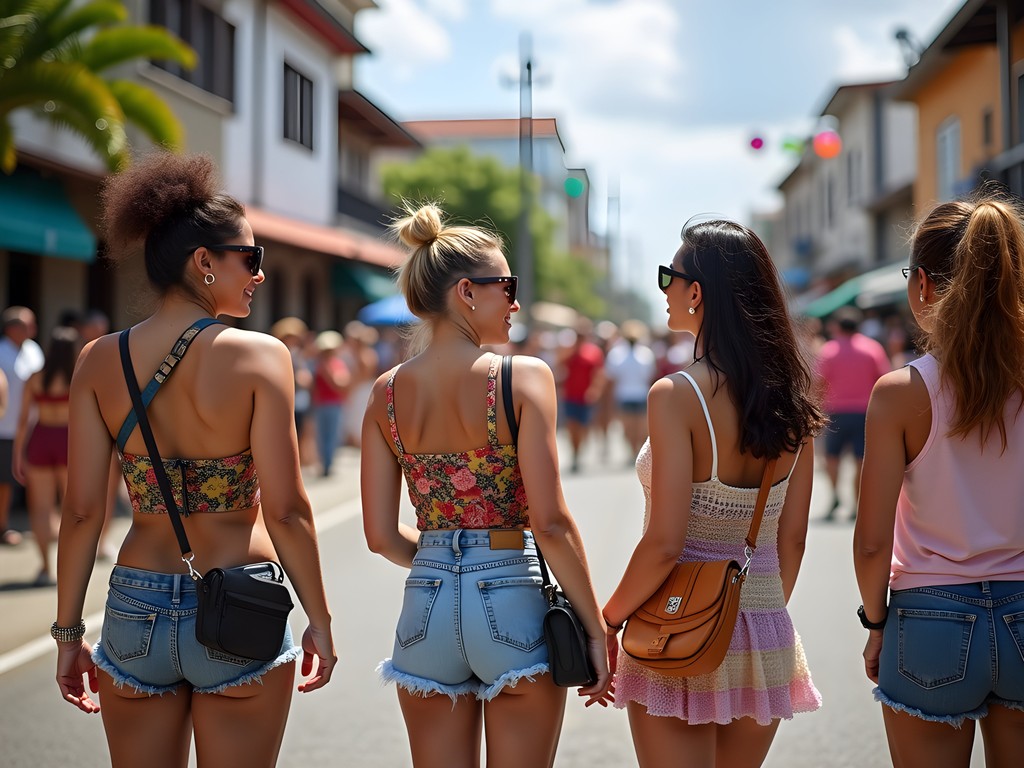
💡 Pro Tips
- Establish a check-in system with someone back home, sharing your daily itinerary
- Carry a charged power bank at all times—phone battery life is a safety essential
- Learn basic Spanish phrases related to personal boundaries and safety
Cultural Immersion: Beyond the Main Parades
While the grand parades steal the spotlight, Barranquilla's Carnival offers profound cultural experiences in the quieter corners that many tourists miss. As someone passionate about cultural preservation, these became the highlights of my journey.
One morning, I wandered into a neighborhood workshop where artisans were applying finishing touches to carnival masks. The master craftsman, Señor Rodrigo, invited me to try my hand at painting a traditional Congo mask. My calligraphy skills transferred surprisingly well to the delicate work, and for three hours, I forgot I was a foreigner as we worked side by side, communicating through broken Spanish, hand gestures, and the universal language of art.
Finding Authentic Experiences:
The pre-carnival events, starting weeks before the official opening, offer intimate glimpses into local traditions without overwhelming crowds. I attended a Noche de Guacherna (Night of Lanterns) parade in a residential neighborhood where families proudly displayed handmade lanterns and performed traditional dances. Unlike the main events, tourists were scarce, and locals eagerly explained traditions when they noticed my interest.
The Carnival Museum (Casa del Carnaval) became my sanctuary for understanding the festival's deeper meanings. Beyond the expected displays of costumes and photographs, they offered workshops where I learned the basic steps of cumbia and mapale dances from elderly practitioners committed to preserving these traditions.
Food plays a crucial role in cultural immersion. Rather than sticking to tourist restaurants, I followed my nose to palma de coco stands where grandmothers served traditional carnival treats like arepa de huevo (egg-filled corn cakes) and carimañolas (yuca fritters). These impromptu food stops often led to conversations with locals eager to share their carnival memories.
Perhaps my most treasured experience came through a connection with a local calligraphy artist I found through social media before my trip. Discovering our shared passion, she invited me to a gathering where community members created handwritten signs with traditional carnival sayings and proverbs. The evening evolved into an impromptu cultural exchange where I demonstrated some Indian calligraphy techniques while learning Colombian styles—a perfect example of how shared artistic interests can bridge cultural divides.

💡 Pro Tips
- Visit the Casa del Carnaval museum early in your trip to gain context before the main events
- Look for workshops where locals create carnival costumes and masks—many welcome visitors
- Follow local Barranquilla cultural accounts on social media months before your trip to discover pre-carnival events
Sustainable and Responsible Carnival Experience
Massive festivals like Barranquilla's Carnival inevitably create environmental challenges. As someone committed to sustainable travel, I was determined to enjoy the celebration while minimizing my impact and supporting responsible tourism initiatives.
The carnival's environmental footprint is substantial—from single-use plastics at food stalls to the foam sprays and maicena (flour) that eventually wash into waterways. I packed my reusable water bottle with built-in filter, which proved invaluable in Colombia's heat while eliminating dozens of plastic bottles from my personal waste stream.
My police background has taught me to look beyond surface appearances, which helped me identify genuinely sustainable options. For example, rather than purchasing mass-produced carnival costumes (often made with synthetic materials that end up in landfills), I visited a community workshop recommended by my hostel. There, local artisans created accessories from recycled materials, and I commissioned a beautiful headpiece made from repurposed fabric scraps and sustainable natural fibers.
Transportation during carnival presents another sustainability challenge. The city becomes congested with private vehicles, creating pollution hotspots. I discovered that Barranquilla implements a special carnival transportation system with dedicated bus routes. Though initially intimidating, these buses proved efficient and environmentally preferable to constant taxi rides. The routes were clearly marked on a special carnival map available at tourist information points.
Supporting the right businesses matters too. I sought out restaurants displaying the 'Carnival Sustainability Pledge' sticker—an initiative encouraging establishments to eliminate single-use plastics and source ingredients locally. One standout was Cocina Mestiza, where they served traditional carnival dishes on banana leaves rather than disposable plates.
Perhaps most importantly, I engaged with community-based tourism initiatives that ensure festival profits benefit local residents. The Barrio Abajo Cultural Tour, led by neighborhood residents, provided authentic insights into carnival traditions while directing funds to community development projects. These tours often include visits to family workshops where traditional carnival crafts are preserved—creating economic incentives for cultural conservation.
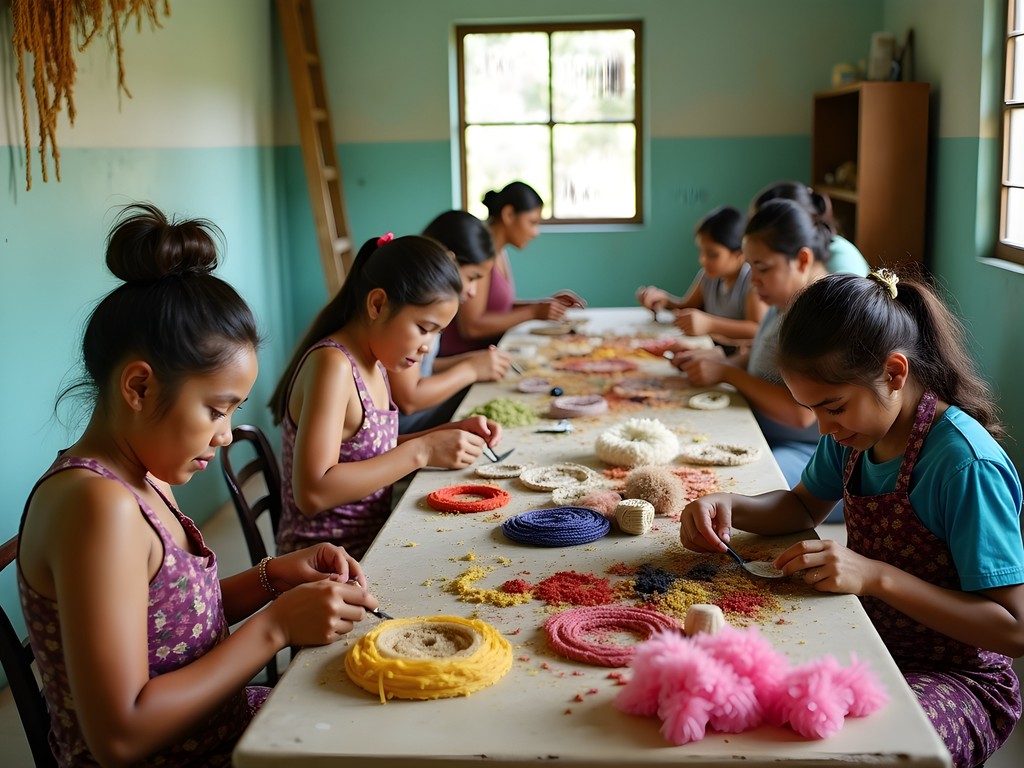
💡 Pro Tips
- Pack a reusable water bottle with filter, reusable cutlery set, and compact shopping bag
- Look for the 'Carnival Sustainability Pledge' logo at restaurants and shops
- Choose community-led tours that reinvest in local neighborhoods
Final Thoughts
As I watched the symbolic burial of Joselito Carnaval on the final Tuesday, marking the end of the festivities, I reflected on how this celebration had changed me. Barranquilla's Carnival isn't just a spectacle to photograph—it's a living cultural ecosystem that requires our respect, protection, and thoughtful participation. For solo female travelers especially, it offers a rare combination of vibrant celebration and meaningful cultural exchange when approached with proper preparation. The carnival taught me that sometimes the most authentic experiences happen when we step away from the main attractions and into the workshops, neighborhood celebrations, and family gatherings where traditions are actively preserved. Whether you're drawn by the rhythms of cumbia, the artistry of the costumes, or simply the infectious joy that permeates the city, Barranquilla awaits with open arms. Just remember to plan early, stay aware, and approach this UNESCO-recognized celebration with the cultural appreciation it deserves. ¡Quien lo vive es quien lo goza!—Those who live it are those who enjoy it!
✨ Key Takeaways
- Book accommodation 3-4 months in advance to secure reasonable rates during this high-demand period
- Balance attending one premium ticketed event with free street celebrations for the best experience on a budget
- Connect with local artisans and community workshops for the most authentic cultural immersion
- Implement specific safety strategies while maintaining an open mind to fully enjoy the celebration
📋 Practical Information
Best Time to Visit
February/early March (4 days before Ash Wednesday)
Budget Estimate
€250-€300 for one week (excluding flights)
Recommended Duration
5-7 days (including pre-carnival events)
Difficulty Level
Intermediate
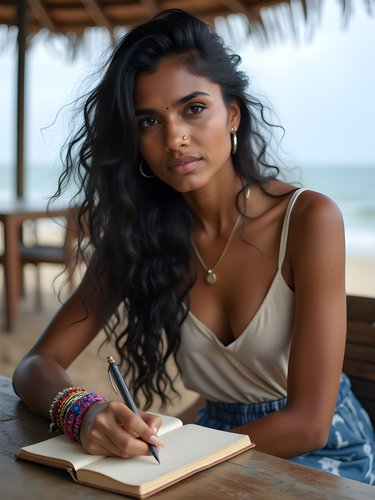

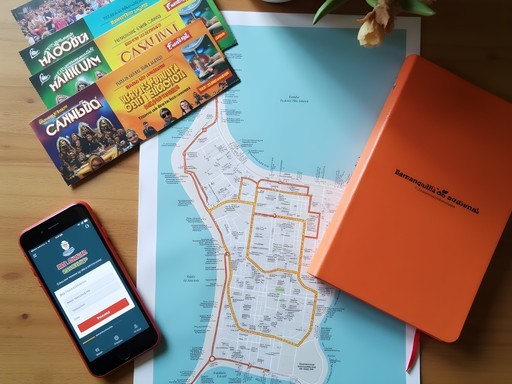
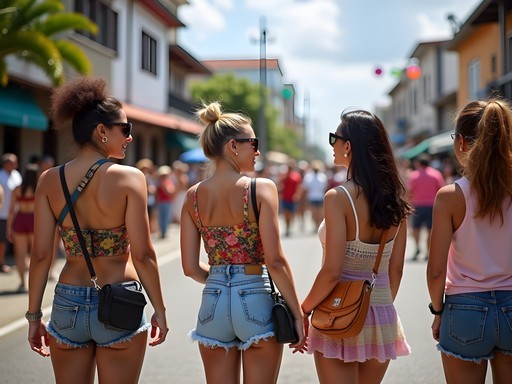
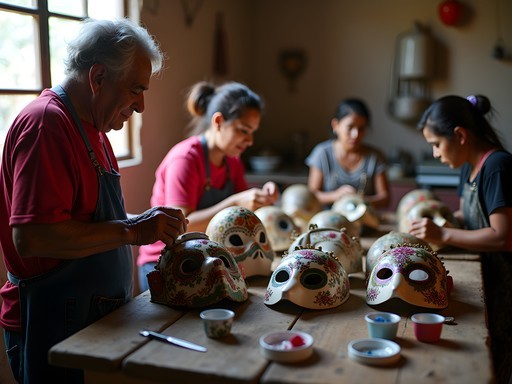
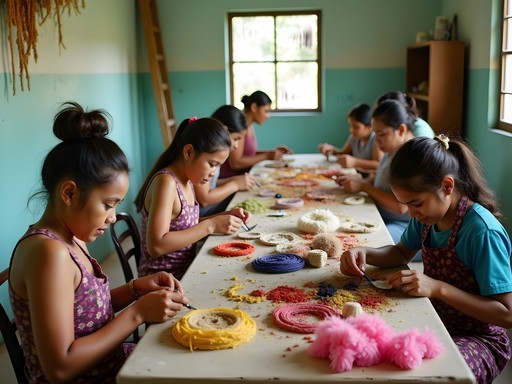










Comments
Sophia Gomez
Violet, your section on cultural immersion really resonated with me. When I attended last year, I signed up for a pre-carnival workshop where local artisans taught us the meaning behind different masks and helped us create our own. It completely transformed my experience of the parades - suddenly I understood the historical and cultural significance of each character! For anyone going, I highly recommend connecting with Fundación Carnaval de Barranquilla - they offer workshops and behind-the-scenes tours that most tourists miss. The most magical moment for me was joining a traditional cumbia circle at 3am in a neighborhood far from the tourist areas - elderly maestros showing youngsters the steps that have been passed down for generations.
freeguide
If anyone's planning to go, don't miss La Marimonda characters - they're unique to Barranquilla's carnival and have this elephant-like mask with colorful clothes. The story behind them is fascinating - they were created to mock the rich elite back in the day. Also, try to catch one of the night parades (Noche de Guacherna) - totally different vibe from the daytime events!
wanderway
How safe is it really for solo female travelers? I'm thinking about going next year but a bit nervous about the party atmosphere.
Sophia Gomez
I went solo last year and had a great time! Stay in well-reviewed accommodations in El Prado or Alto Prado neighborhoods, use registered taxis or Uber, and be aware of your surroundings like any big event. I made friends with a group of travelers at my hostel and we looked out for each other during the festivities. The foam spray can get a bit wild during certain events, so I carried my valuables in a waterproof pouch under my clothes. Overall, locals were incredibly welcoming and protective of tourists!
wanderway
Thanks so much! That makes me feel better about going. Will definitely check out those neighborhoods!
starblogger
Is February really the best time? Can't do it then :(
freeguide
Unfortunately, yes - Carnival dates are fixed before Lent, so it's always in February or very early March. The whole city transforms for it. Nothing comparable happens at other times of year.
Frank Garcia
Excellent breakdown of the Carnival experience, Violet. I attended in 2024 and would add that the neighborhood 'verbenas' (street parties) offer a more authentic experience than some of the main events. They're less crowded with tourists and you'll see locals truly letting loose. Regarding safety, I'd emphasize your point about transportation - pre-arranging rides is critical, especially late at night. The local ride-sharing apps were surprisingly reliable, though signal can be spotty during peak festival times. Did you manage to try the traditional Carnival foods? The arepa de huevo vendors near Plaza de la Paz were my daily breakfast!
Violet Hayes
Thanks Frank! Yes, the verbenas are where the real magic happens. And those arepas de huevo - I'm still dreaming about them! Did you catch any of the cumbia dance competitions?
Frank Garcia
I did! The cumbia competitions were incredible - the skill level was mind-blowing. I attempted to learn some basic steps from locals but quickly realized it takes years to master that hip movement!
bluewalker
Those costumes look amazing! Adding this to my bucket list.
wandernomad
OMG this post brings back so many memories!!! I went to Barranquilla Carnival last year and it was INSANE! The Battle of Flowers parade blew my mind - those costumes are next level amazing! Violet, your tip about staying hydrated saved me - it gets so hot during those parades. I danced until my feet literally couldn't take it anymore. Anyone planning to go should definitely book accommodation waaaaay in advance. I ended up paying triple because I waited too long!
Violet Hayes
So glad you enjoyed it too! The heat is definitely no joke - I went through so many water bottles during the Battle of Flowers!
exploreadventurer
How's the cell service during the festival? Can you easily meet up with people if separated?
colombiatravelfan
Service gets spotty in the densest crowds. Best to set meeting points ahead of time!
Jean Wells
For anyone concerned about accommodation costs - I stayed in Soledad (just outside the city center) and saved nearly 50% on lodging. Public transportation to the festival areas was frequent and inexpensive, though you'll want to head back before the very late hours. The neighborhood celebrations Violet mentions in the Cultural Immersion section are truly where you'll find the heart of Carnival. I particularly enjoyed the "Noche de Guacherna" - the Friday night parade before official Carnival begins. It's more local-focused and less touristic. Violet, did you participate in any of the foam or water fights? I was initially hesitant but ended up joining in - surprisingly fun once you embrace the chaos!
Violet Hayes
Great tip about Soledad! And yes, I did get caught in a foam fight on Sunday - ended up completely covered but it was one of my favorite memories! Sometimes you just have to dive into the chaos. The Noche de Guacherna was magical - those lantern-lit parades feel so intimate compared to the main events.
worldtravelermom
Your photos capture the energy so well! Making me want to book tickets right now!
Venture X
Premium card with 2X miles, $300 travel credit, Priority Pass